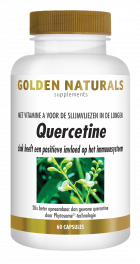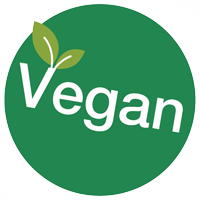Quercetin as a supplement? Choose quality!
- May 12, 2022
Do you know what was the most Googled supplement in the Netherlands in 2021? Quercetin! You may have never heard of it, but that's about to change. In this blog we will tell you everything about the influence of this impressive antioxidant, of which more and more good properties are becoming known.
What is Quercetin?
Quercetin, sometimes also written as 'quercitin', is a bioactive substance, an important bioflavonoid and a powerful natural antioxidant. It is also known as vitamin P. Quercetin occurs in large numbers in nature. As a nutrient we find it in various fruits and vegetables such as capers, kale, asparagus, sweet potato, red onion, berries, apples and plums and buckwheat. The substance is mainly located in the peel. Quercetin is yellow-brown in color and tastes a bit bitter.
Quercetin from food: poorly absorbed
Unfortunately, quercetin has one major deficiency: although it is in various foods, our body hardly absorbs it. This is a known 'disability' of bioflavonoids and is caused by the low water solubility. Another cause is the preparation: during cooking, 70 to 90 percent of quercetin disappears from the diet. But there's another problem: quercetin is a substance that easily binds with phytonutrients, also known as antibodies. This is unfavorable because it makes it extra difficult to absorb the remaining 10 to 30 percent quercetin from food. All in all, only a small part actually reaches our body cells. A supplement can provide the desired supplement. Preferably choose a high-quality quercetin supplement where the nutrient is linked to phospholipids. Read on to understand why this is the best choice.
20x more absorbable thanks to Phytosome® technology!
Phytosome® technology makes quercetin up to 20 times more absorbable!
The naturally poor absorption of quercetin is therefore partly caused by the binding with phytonutrients (antibodies). Fortunately, there are clever minds who have found a solution for this. The Italian nutrient developer and producer Indena has devised a technology in which quercetin from the flowers of the honey tree (Sophora japonica L.) is mixed with phospholipids, which are fat-like particles. Those fat-like particles provide less 'grip'. This drastically hinders the binding of quercetin with phytonutrients and increases the absorbability of quercetin. The natural binding of quercetin with phospholipids creates a homogeneous mixture that we call phytosomes. The result of this Phytosome® technology from Indena is a patented product called Quercefit®. Scientific research shows that Quercefit® is up to twenty times more absorbable than 'normal' quercetin. An incredibly good invention!
Quercetin improves the absorption of zinc
Golden Naturals combines Quercefit® with zinc, vitamin A and vitamin C. We do this for a reason! Quercetin improves the absorption of zinc. Quercetin is a so-called zinc ionophore. With a reduced resistance, our body uses more zinc. This requires zinc ionophores: transporters that transport zinc to the cells, resulting in better absorption. Zinc has a positive effect on the immune system and contributes to the protection of healthy cells and tissues. In addition to zinc, vitamin C also has an important interaction with quercetin. The best-known property of vitamin C is, of course, the support of the immune system and the body's defenses. Vitamin A is good for the mucous membranes in the lungs.
Buy easily absorbable quercetin? Choose the best product for you!
In short: if you are looking for a supplement with quercetin, always choose a high-quality product in which quercetin is linked to phospholipids. Quercefit® absorbs our body up to twenty times better than regular quercetin. Golden Naturals is a choice for quality.






